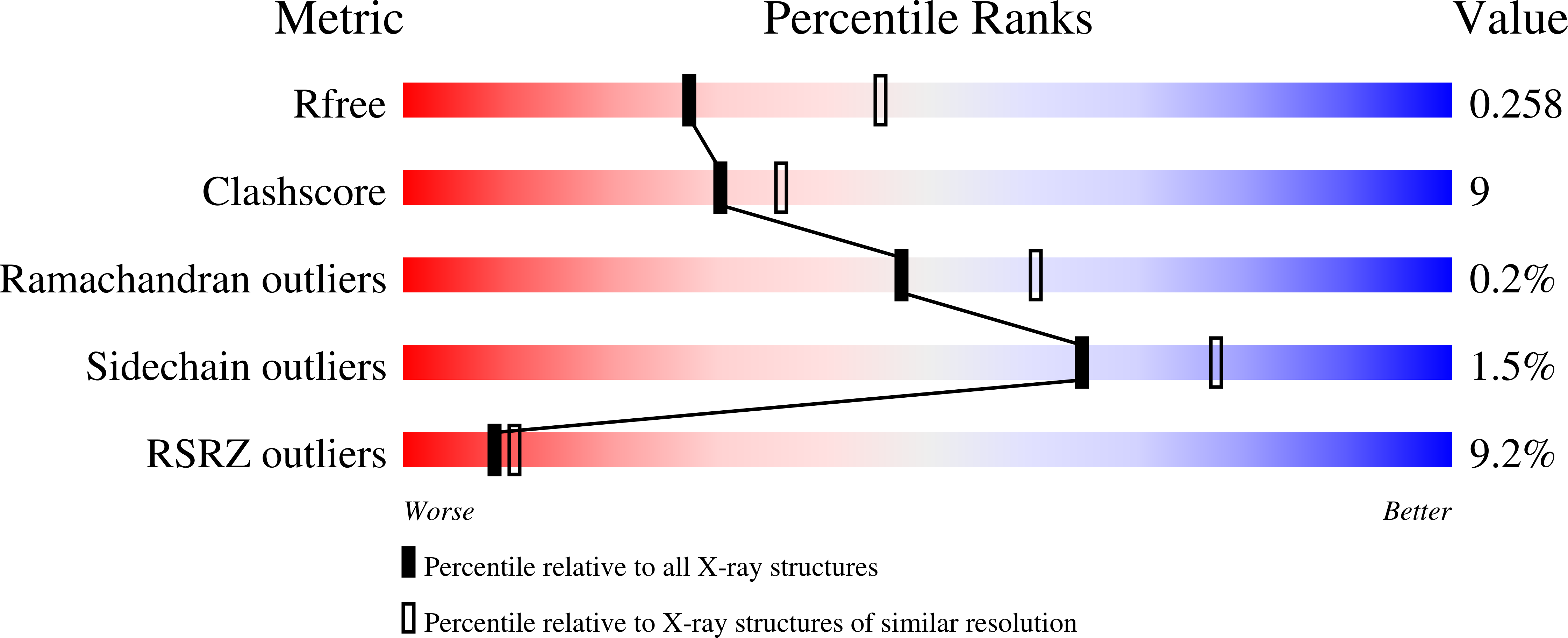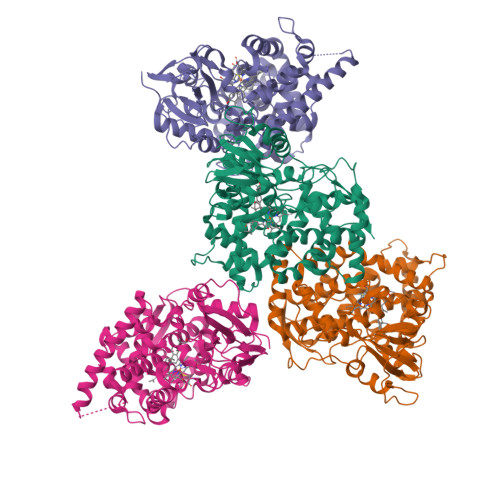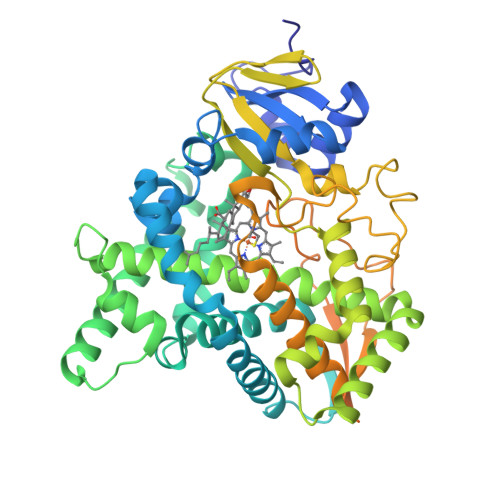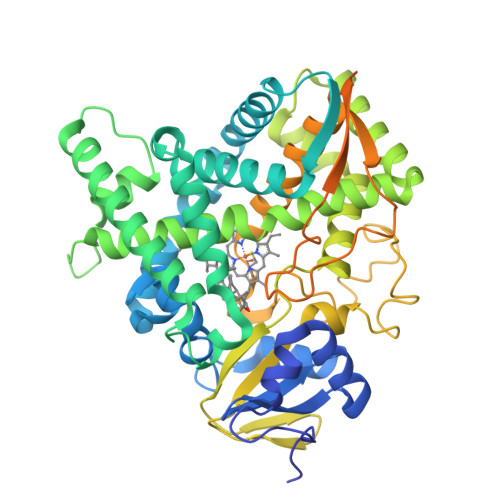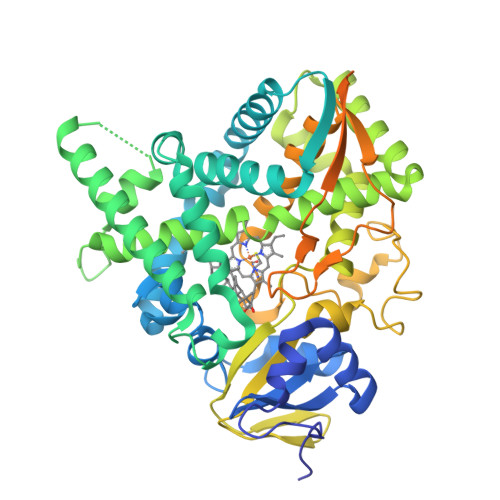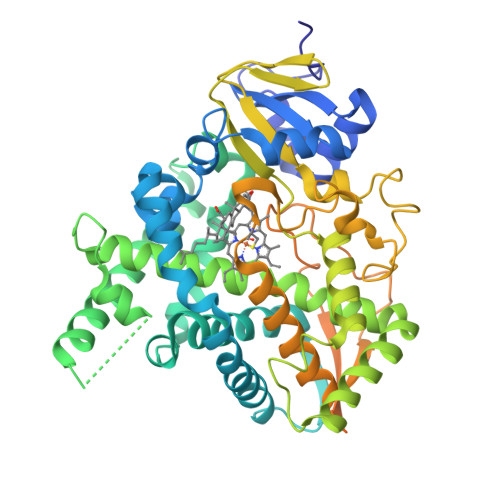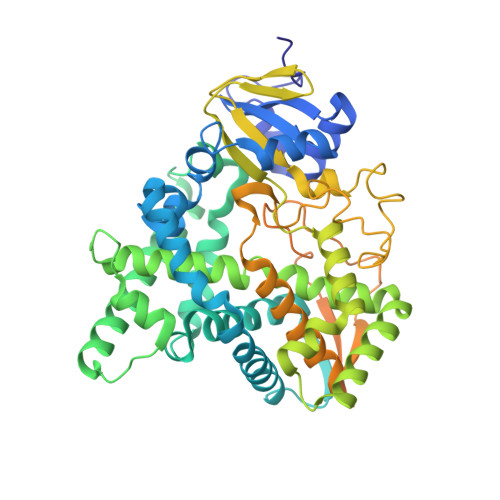Unravelling the role of transient redox partner complexes in P450 electron transfer mechanics.
Hargrove, T.Y., Lamb, D.C., Smith, J.A., Wawrzak, Z., Kelly, S.L., Lepesheva, G.I.(2022) Sci Rep 12: 16232-16232
- PubMed: 36171457
- DOI: https://doi.org/10.1038/s41598-022-20671-0
- Primary Citation of Related Structures:
7SNM - PubMed Abstract:
The molecular evolution of cytochromes P450 and associated redox-driven oxidative catalysis remains a mystery in biology. It is widely believed that sterol 14α-demethylase (CYP51), an essential enzyme of sterol biosynthesis, is the ancestor of the whole P450 superfamily given its conservation across species in different biological kingdoms. Herein we have utilized X-ray crystallography, molecular dynamics simulations, phylogenetics and electron transfer measurements to interrogate the nature of P450-redox partner binding using the naturally occurring fusion protein, CYP51-ferredoxin found in the sterol-producing bacterium Methylococcus capsulatus. Our data advocates that the electron transfer mechanics in the M. capsulatus CYP51-ferredoxin fusion protein involves an ensemble of ferredoxin molecules in various orientations and the interactions are transient. Close proximity of ferredoxin, however, is required to complete the substrate-induced large-scale structural switch in the P450 domain that enables proton-coupled electron transfer and subsequent oxygen scission and catalysis. These results have fundamental implications regarding the early evolution of electron transfer proteins and for the redox reactions in the early steps of sterol biosynthesis. They also shed new light on redox protein mechanics and the subsequent diversification of the P450 electron transfer machinery in nature.
Organizational Affiliation:
Department of Biochemistry, Vanderbilt University School of Medicine, Nashville, TN, 37232, USA.







